 Today is the glorious feast of the Holy Name of Mary. My dh’s birthday as well, what a blessed feast to be born on! Here is a most beautiful explanation of the devotion to that Holy Name..Mary.
Today is the glorious feast of the Holy Name of Mary. My dh’s birthday as well, what a blessed feast to be born on! Here is a most beautiful explanation of the devotion to that Holy Name..Mary.Over at Catholic Cuisine I have made a cake for the feast – and the cake has been especially made in remembrance of historical story in Spain, under reign of Queen Isabel, a story of the defense of the phrase, “Ave Maria!” It is a very small excerpt from the book The Last Crusader: Isabella of Spain by William Thomas Walsh. A simply masterful book, very, VERY thick but so enthralling that I read it in 4 days!

Defending the ‘Ave Maria’
Starting on page 326.
.....”God has permitted this to happen to test our faith,” she said. (Queen Isabel) “If we stand firm He will yet give us victory;” and she commanded the army to rebuild the camp at once, not in linen and silk, but in stone. Foundations were dug, rocks were drawn from the neighboring hills, and day after day the buildings arose in the sight of the puzzled Arabs. The whole army, swelled by new recruits to 80,000, engaged in the work, and within three months, as if by a miracle, a complete new city, with towers, battlements and walls, stood in the midst of the plain. Two principal streets in the form of a great cross, ran north and south and east and west to four gates, through a public square large enough to contain the whole army. From the topmost tower was raised the silver cross of the Crusade, with the banners of Santiago and of Castile and Aragon. “Call the city Isabel, after the Queen!” cried the cavaliers and the soldiers. But she insisted upon its being name Santa Fe, Holy Faith.
The King had forbidden those costly skirmishes in which the light-armed Moors usually had the advantage. But when the bands of Saracen cavalry failed to draw fire from their enemies, individuals among them began riding close to the Christian camp, with challenges to personal combat. At first the Christians responded; but after Fernando had lost some of his best men, he forbade all duels of any sort. “Hunger alone will win the city for us,” and Isabel to the French ambassador.
Among the Moors, however, there was a cavalier named Yarfe, a giant in stature and a madman for courage and strength. One day he rode to the very edge of the Christian camp and rising in his stirrups, hurled a javelin toward the royal quarters. The missile stood quivering in the ground, only a few feet from the Queen’s tent, and on it was found an insulting note marked “for the Queen of Castile.”
Hernando Perez del Pulgar – not the Queen’s secretary, but another known as El de las Hazanas, He of the Exploits – vowed vengeance. That night, with fifteen chosen companions, he rose to a certain little postern gate of Granada where there were only a few unmounted guards. While his companions cut them down. Hernando dashed through the streets of the sleeping city. At the principal mosque he dismounted, knelt to say a prayer and to dedicate the church to the Blessed Virgin, and nailed to the door with his dagger a placard bearing the words,
“Ave Maria!”
He fled for the postern gate. By that time the street was full of Moorish soldiers attacking his companions. He bowled over some, struck down others, cut his way to the gate, and rejoined his friends. All galloped back to Santa Fe without the loss of a man.
One Saturday in August, the Queen expressed a desire to see Granada and the camp from a high place. The Marques of Cadiz provided a great escort, to make sure of her safety; and a splendid train of cavaliers rode out of the camp, with their Majesties and Prince Juan and the three Princesses, to the village of Zubia, on the mountain side to the left to Granada, where there was a fine view. The Marques of Villena and Don Alonso de Aguilar stationed their forces on the slope above the village, while the Marques of Cadiz drew up his army in battle formation in the plain below. Thus the Queen and her children were almost surrounded by a ring of steel. They entered a house in the hamlet, and going to the terraced roof, looked down with delight on the red towers and tiled roofs of the Alhambra, and the massive wall too great in circuit for any army to encircle.
The Moors, however, supposed that the Christians were offering them battle; and as they always counted on their superior fleetness in cavalry actions, they came out in great numbers under the gallant Muza. Queen Isabel, unwilling to have her curiosity cost the lives of Christian soldiers, sent orders to the Marques of Cadiz not to attack, and to accept no challenges. The Moors rode near. They discharged arrows into the Christian ranks. Some of them came near enough to throw spears. Still the Spanish host stood silent and immovable. The Moors laughed and hooted.
One of them, a gigantic man on a fiery black horse, came forward alone, his visor down, a scimitar of Damascus steel at his side, and over his great buckler a lance from which floated the device that showed who he was. It was Yarfe, the colossus, who had thrown the insulting spear at the Queen’s quarters. A murmur of anger passed over the Christian host, but it swelled into a cry of rage when they saw dragging in the dust and tied to the tail of Yarfe’s horse, the placard inscribed “Ave Maria” that Pulgar had pinned to the door of the Mosque.
That was more than Christians could endure. Garcilaso de la Vega, a young Castilian, galloped to Zubia, threw himself on his knees before King Fernando, and begged permission to avenge the insult to Our Lady. The King nodded. Garcilaso remounted, closed his visor, spurred his steed, and sped down to the plain, his four black plumes rising and falling as he went. Yarfe saw him coming, and was ready for him. The two came together with a shock that could be heard on the mountain side. The Queen held her breath in fear, and prayed for her champion.
The great weight of the Moor had thrown Garcilaso well back in his saddle, and he nearly lost his seat, but he recovered his balance and drew his sword, while the scimitar of Yarfe made a flashing arc in the sun. Time after time they closed, the swords rose and fell, both were wounded in several places. Garcilaso, worn down by the might of the Moor and by his own heavy armor, was growing tired. Perceiving this, Yarfe suddenly reached over and with his gorilla-like arms dragged him from his saddle. Both fell entangled to the ground, while their horses galloped away. Queen Isabel saw the huge Saracen place his knee on the breast of her champion, saw him raise his dagger to plunge it into the throat of the vanquished. A wail of despair ascended from the Christian army. While they watched, horrified, fascinated, they saw the Moor fall backward into the thick dust. Garcilaso painfully arose and stood looking down at his dead foe. He had shortened his sword, and when Yarfe raised his arm, plunged the point into his heart.
Remounting, he galloped back with the “Ave Maria” hoisted triumphantly on the point of his sword. The army roared its applause..................”
Putting this story in proper historical context, the Moors then attacked but were defeated. Queen Isabel had previously ordered that this last remaining Moorish city (Granada) be encircled and very soon the Moorish Prince Boabdil surrendered...finally after 700 years Spain was completely Catholic again!
When we sing compline (the night office) in our Gregorian Chant choir, we always finish with the Salve Regina and at the end of this chant we slowly chant .."Virgo Maria". In a monstery, once compline has been chanted there is silence until the next morning.
My choir master once said he knew an old Irish monk who told him:
"Tis a beautiful thing, the last words on your lips being at the end of the day are, "Virgo Maria"
Happy Feast Day!





















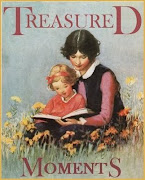















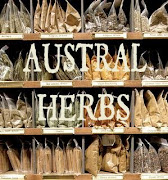






















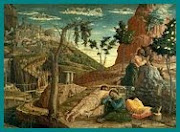








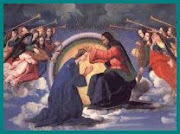








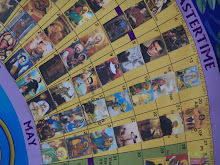


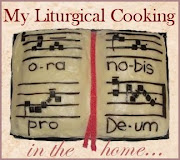
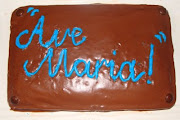



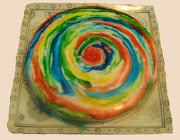
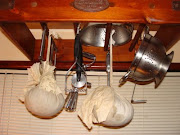

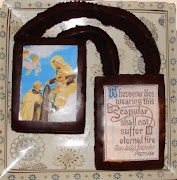

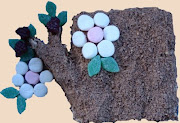
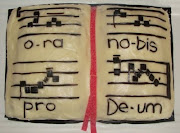

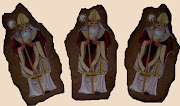







1 comment:
I don't know why your post reminds me of the story of St. Bernard always walking be a statue of Mary and he would say "Ave Maria."
When he died, she came to him and said "Ave Bernard."
What a mother!
Post a Comment